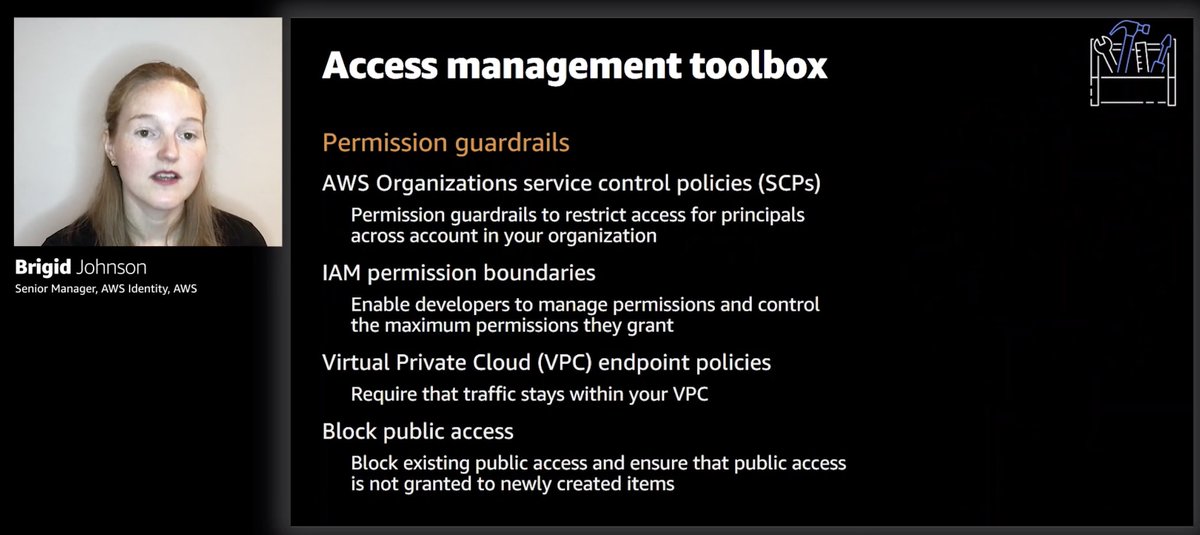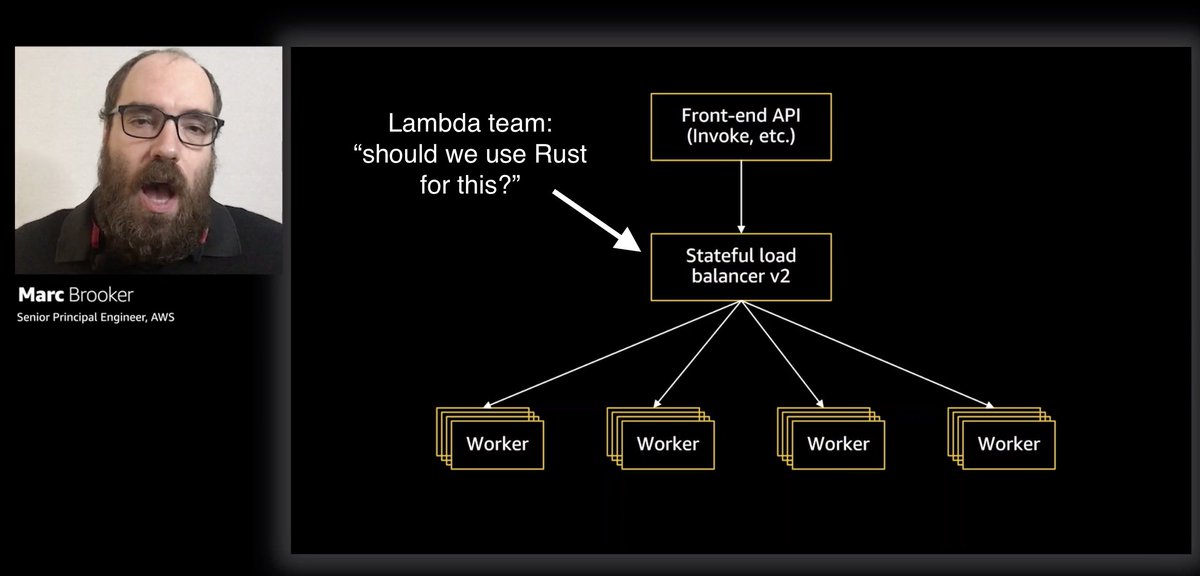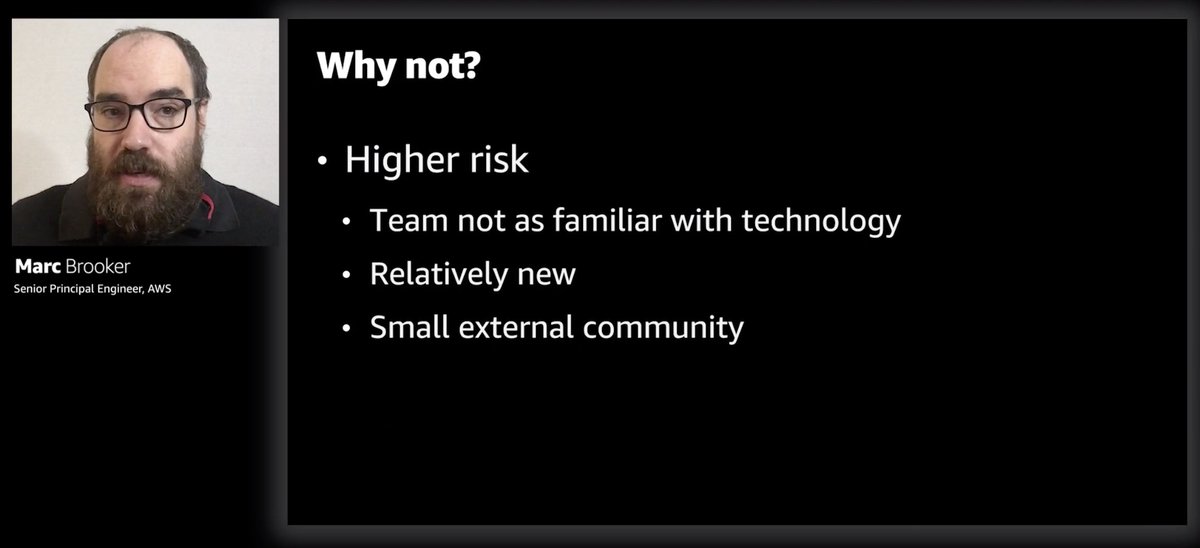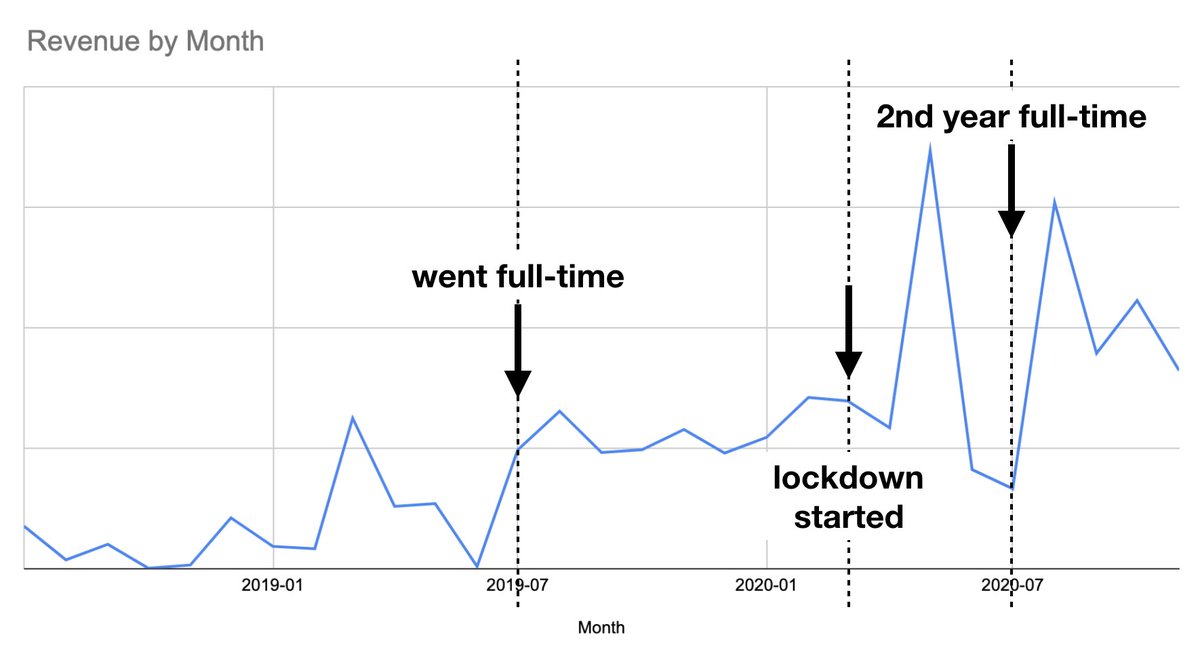
This is part 2 of my #aws #reinvent hot takes on the big #serverless related announcements.
Part 1 is here for anyone who missed it:
Same deal as before, if this gets 168 retweets then I'll do another batch 👍
Alright, here comes the mega 🧵...
Part 1 is here for anyone who missed it:
https://twitter.com/theburningmonk/status/1333350172181622789
Same deal as before, if this gets 168 retweets then I'll do another batch 👍
Alright, here comes the mega 🧵...
1. Lambda now bills you by the ms as opposed to 100 ms. So if your function runs for 42ms you will be billed for 42ms, not 100ms.
This instantly makes everyone's lambda bills cheaper without having to lift a finger. It's the best kind of optimization 😎
aws.amazon.com/about-aws/what…
This instantly makes everyone's lambda bills cheaper without having to lift a finger. It's the best kind of optimization 😎
aws.amazon.com/about-aws/what…
However, this might not mean much in practice for a lot of you because your Lambda bill is $5/month, so saving even 50% only buys you a cup of Starbucks coffee a month.
Still, that's a FREE cup of coffee!
However...
Still, that's a FREE cup of coffee!
However...
Before, because Lambda bills in 100ms, there's no point in optimizing if your avg duration is sub 100ms.
NOW, you can micro-optimize and every ms saved is another $0.00000...X saved.
The question is, should you do it?
In 97% of cases, it'd be premature optimization.
NOW, you can micro-optimize and every ms saved is another $0.00000...X saved.
The question is, should you do it?
In 97% of cases, it'd be premature optimization.

As I discussed here
❓ how many invocations a month?
❓ how much time you can save per invocation?
❓ how much memory does func need?
From these, you can work out a ballpark figure for how much you stand to save.
https://twitter.com/theburningmonk/status/1333833341729124352don't do it until you know your ROI.
❓ how many invocations a month?
❓ how much time you can save per invocation?
❓ how much memory does func need?
From these, you can work out a ballpark figure for how much you stand to save.
Then estimate how many hours is it gonna take you to optimize the code. Times that by 2 ;-)
Then look at your wage, how much you're paid per hour. Times that by 2 (once bonus, pension and everything is factored in, usually it's 2x salary)
Now, you can work out the ROI.
Then look at your wage, how much you're paid per hour. Times that by 2 (once bonus, pension and everything is factored in, usually it's 2x salary)
Now, you can work out the ROI.
To invoke my inner Knuth and to make sure you see the 2nd half of his quote.
If you can identify that critical 3% of use cases (based on ROI, not by how excited you feel about optimizing that bit of code), then you should absolutely do it, especially now you have 10GB functions!
If you can identify that critical 3% of use cases (based on ROI, not by how excited you feel about optimizing that bit of code), then you should absolutely do it, especially now you have 10GB functions!

2. Lambda supports up to 10GB of memory and 6 vCPU cores.
This is another big one for those of you doing HPC or otherwise compute or memory-intensive applications such as training ML models.
aws.amazon.com/about-aws/what…
This is another big one for those of you doing HPC or otherwise compute or memory-intensive applications such as training ML models.
aws.amazon.com/about-aws/what…
Between the AVX2 instruction set and more CPU and memory, the Lambda team is really starting to look after the Lambda as a supercomputer crowd.
Would love to see more use cases around this, and if anyone fancy talking about what you're doing then join me on @RealWorldSls 🙏
Would love to see more use cases around this, and if anyone fancy talking about what you're doing then join me on @RealWorldSls 🙏
3. Aurora Serverless v2, arguably the biggest announcement from today.
Honestly, it sounds great! But then again, so did Aurora serverless v1, the devil was in the details. So I'll reserve my enthusiasm until I see it in action.
aws.amazon.com/about-aws/what…
Honestly, it sounds great! But then again, so did Aurora serverless v1, the devil was in the details. So I'll reserve my enthusiasm until I see it in action.
aws.amazon.com/about-aws/what…
I'm just as curious about what hasn't been said as what has - there was no mention about cold starts, which was the thing that made everyone go "yuck, we can't have that in production!".
And what about data API? I imagine (and hope) that is still available on v2.
And what about data API? I imagine (and hope) that is still available on v2.
4. Lambda supports container images as a packaging format.
Another big announcement and I expect to see lots of excitement and confusion around this.
aws.amazon.com/about-aws/what…
Another big announcement and I expect to see lots of excitement and confusion around this.
aws.amazon.com/about-aws/what…
I've shared some details on how it works, use cases and some of my thoughts on it on the @Lumigo blog already, so go and check it out
lumigo.io/blog/package-y…
lumigo.io/blog/package-y…
For better or worse, it's what people have been asking for.
And for orgs with strict compliance and audit requirements, being able to use the same tooling as their container workload is a must. This is designed for them.
What's in it for the rest of us?
And for orgs with strict compliance and audit requirements, being able to use the same tooling as their container workload is a must. This is designed for them.
What's in it for the rest of us?
Well, it lets you ship a container image up to 10GB, so you can pack a lot of read-only data with your image. Like a giant ML model, which would have been slow and painful to read from EFS.
BUT, for functions that are shipped as zip files, the limit is still 250MB unzipped.
BUT, for functions that are shipped as zip files, the limit is still 250MB unzipped.
When you use container images, you're responsible for securing and patching the base image. Even if you use an AWS-provided base image, you still have to deploy their updates to your functions regularly.
This is a big set of responsibilities to take on but @ben11kehoe has a great idea on how it can be fixed
It'd address my biggest concern with using container images for sure.
https://twitter.com/ben11kehoe/status/1333839856254873600
It'd address my biggest concern with using container images for sure.
However, you're still much better off by keeping things simple as much as you can and stick to basics. Using zip files = no building docker images = simpler pipeline (no need to publish to ECR) = no need to worry about function needing optimization again after 14 days of idle
I keep saying it, keep it simple for as long as you can, and only reach out for more complex solution when you must.
https://twitter.com/theburningmonk/status/1332211516154798080
5. AWS Proton, a service for deploying container and serverless applications.
Honestly, I'm not sure about this one... there are already lots of ways to deploy serverless and container applications on AWS with both official and 3rd tools
aws.amazon.com/about-aws/what…
Honestly, I'm not sure about this one... there are already lots of ways to deploy serverless and container applications on AWS with both official and 3rd tools
aws.amazon.com/about-aws/what…
And looking at the example in this thread
Didn't we learn that was a bad idea 10 years ago?
Maybe I've misunderstood the intended target user for this service?
https://twitter.com/kohidave/status/1333842798215237632it's doing deployment by clicking in the AWS console.
Didn't we learn that was a bad idea 10 years ago?
Maybe I've misunderstood the intended target user for this service?
I mean, you have Amplify for frontend devs who don't wanna know what AWS resources are provisioned.
You have @goserverless, SAM, Terraform, CDK and too many others to list that caters for backend devs who want more say on what's deployed in your AWS account.
You have @goserverless, SAM, Terraform, CDK and too many others to list that caters for backend devs who want more say on what's deployed in your AWS account.
But it's not clear to me who is Proton designed for.
Surely not your DevOps team or sys admins, they're gonna want IaC for sure.
And according to this thread, the UX is not quite ready either
Surely not your DevOps team or sys admins, they're gonna want IaC for sure.
And according to this thread, the UX is not quite ready either
https://twitter.com/IamStan/status/1333858100500176896(at least not compared to other solutions on the market)
6. AWS Glue Elastic Views
"Combine and replicate data across multiple data stores using SQL"
This sounds like it has some interesting possibilities! I mean, "materialized views" comes right out of the CQRS book, doesn't it?
aws.amazon.com/about-aws/what…
"Combine and replicate data across multiple data stores using SQL"
This sounds like it has some interesting possibilities! I mean, "materialized views" comes right out of the CQRS book, doesn't it?
aws.amazon.com/about-aws/what…
I have built this type of materialized views by hand so many times before, in real-time with Kinesis Analytics, or with some sort of batch-job against Athena (where all the raw events are dumped into). This could make all those home-grown solutions redundant.
The fact that it supports S3, ES, RDS, DynamoDB, Aurora and Redshift is pretty insane. I guess one challenge with mashing together all these data sources is that it's impossible to guarantee ordering of data updates in those systems is respected during replication.
I think the devil is gonna be in the details for this one. But I'm excited about what it could do in any case.
7. S3 replication supports multiple destinations
Solving a pretty clear (and specific) problem here, that if you need to fan-out the S3 object from one bucket to multiple buckets.
aws.amazon.com/about-aws/what…
Solving a pretty clear (and specific) problem here, that if you need to fan-out the S3 object from one bucket to multiple buckets.
aws.amazon.com/about-aws/what…
Hasn't come up a lot in my work, but it's a blocker when you need that. The way I've solved it until now is to use Lambda to do the fan-out, which is a bit wasteful.
8. S3 adds read-after-write consistency for overwrites
This is BIG.
Before, read-after-write consistency was only guaranteed for new objects, not for updates. This causes SOOO MANY eventual consistency problems that you end up solving at the app level.
aws.amazon.com/about-aws/what…
This is BIG.
Before, read-after-write consistency was only guaranteed for new objects, not for updates. This causes SOOO MANY eventual consistency problems that you end up solving at the app level.
aws.amazon.com/about-aws/what…
I think @gojkoadzic is really gonna appreciate this update. We were talking a while back and this was one of the biggest problems he had with S3 buzzsprout.com/877747/4218644
9. Amplify launched admin UI for managing your Amplify project
I had a preview of this last week, and although I don't use the Amplify CLI, I gotta say this looked pretty slick. If you use Amplify, check it out.
aws.amazon.com/about-aws/what…
I had a preview of this last week, and although I don't use the Amplify CLI, I gotta say this looked pretty slick. If you use Amplify, check it out.
aws.amazon.com/about-aws/what…
10. S3 supports two-wap replication for object metadata changes
Notice that this is only for replicating object metadata changes (tags, ACL, etc.) and not the actual data objects themselves.
aws.amazon.com/about-aws/what…
Notice that this is only for replicating object metadata changes (tags, ACL, etc.) and not the actual data objects themselves.
aws.amazon.com/about-aws/what…
I'm honestly not sure about the specific use case here...
I get why there isn't bi-directional data replication, but in what use cases would you be updating metadata in the replicated bucket (the backup/passive bucket, or whatever you'd like to call it)? 🤔
Enlighten me anyone?
I get why there isn't bi-directional data replication, but in what use cases would you be updating metadata in the replicated bucket (the backup/passive bucket, or whatever you'd like to call it)? 🤔
Enlighten me anyone?
That's it for the big serverless-related announcements from today, unless I missed anything. But there was something from preinvent that I missed in part 1
11. Modules for CloudFormation
Like Terraform modules, but for CloudFormation
aws.amazon.com/about-aws/what…
Like Terraform modules, but for CloudFormation
aws.amazon.com/about-aws/what…
I think this one is great, and not just for serverless applications, and gives you a way to create reusable components for a CloudFormation stack, something that AWS tried (and failed, so far) with SAR. Let's see what happens with modules.
There are some key differences between SAR and modules:
a. modules are private to an account, SARs can be shared publicly.
b. modules are merged into a stack, SARs get compiled into nested stacks
c. SAR has versioning, modules don't
a. modules are private to an account, SARs can be shared publicly.
b. modules are merged into a stack, SARs get compiled into nested stacks
c. SAR has versioning, modules don't
At first glance, it still feels like if your goal is to create reusable components that can be easily shared in your organization, and be able to version control them, then CDK patterns still look the better option here.
Feel free to tell me I'm wrong here.
Feel free to tell me I'm wrong here.
FWIW I'm not a fan of CDK, but if I were to use it, it will be because I can create reusable components and distribute them in my org IFF every team is using the same prog language, otherwise, I'd have to replicate the same pattern in every language that teams are using...
Alright, and that concludes part 2, let me know if I missed any big announcements from Andy Jassy's keynote.
Plz retweet this thread, if it gets 168 retweets then I will do another batch of these hot takes!
Until then, enjoy #reinvent :-D
Plz retweet this thread, if it gets 168 retweets then I will do another batch of these hot takes!
Until then, enjoy #reinvent :-D
So, circling back to Proton for a sec here..
Thanks to @matthieunapoli for pointing me to it, but this thread explains the target demographic and use case for Proton:
So it makes a lot more sense now, although the execution is still not quite there yet.
Thanks to @matthieunapoli for pointing me to it, but this thread explains the target demographic and use case for Proton:
https://twitter.com/Rafavallina/status/1333888010077626368
So it makes a lot more sense now, although the execution is still not quite there yet.
What @Rafavallina calls the "platform team" has different meanings in different orgs. But really large orgs often have a "release team" (literally, they're responsible for taking your commits and pushing it live) whose responsibility overlaps with Proton
While the intended target is clear, it still means that it's not something most of you need to be using.
And for those large orgs it's targeting, they would already have something in place. So I guess Proton needs to up its game to justify the switching cost.
And for those large orgs it's targeting, they would already have something in place. So I guess Proton needs to up its game to justify the switching cost.
• • •
Missing some Tweet in this thread? You can try to
force a refresh












